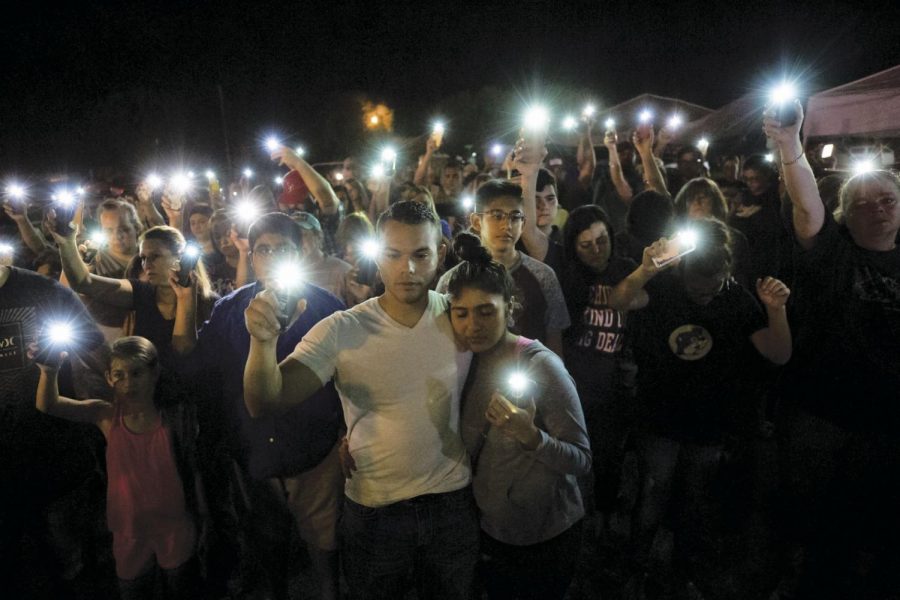Texas shooting alludes to issues of normalization of male violence
A little over a week ago, Sutherland Springs witnessed the worst mass shooting in the history of Texas in which 26-year-old shooter David Patrick Kelley opened fire on the town’s First Baptist Church, killing 26 and leaving another 20 injured. This was not, however, Kelley’s first act of violence: he was discharged from the U.S. Air Force in 2014 for two charges of assault against his then wife and her son, which resulted in the latter’s skull being fractured. This begs the question, is there some sort of correlation between domestic violence and mass shooters? Do those who have the capacity to hurt those close to them also hurt groups of strangers?
Well, according to NPR article “The Relationship Between Domestic Violence And Mass Shootings,” that’s not too far-fetched a notion. In fact, in at least 54 percent of mass shootings, the shooter also killed an intimate partner or family member. This situation becomes all the more dire when considering the fact that about 4.5 million American women report that they have had an intimate partner threaten them with a gun, meaning that the people who are likely to abuse their access to guns are likely to use them against the people who are close to them.
These are people who were licensed to carry a firearm; Kelley did not actually have said license, and yet he was able to purchase four guns over the course of four years, in spite of the fact that he had performed several acts of violence that would have reasonably barred him from doing so. The point here is that there is indeed a connection between domestic violence and mass shooting. The answer lies in a much deeper conversation about male violence in America.
There’s an entire culture around male violence, primarily in the way we are largely desensitized to it as a society. Consider, for example, the prevalence of violence within media, be it the excessive amount of first-person shooters in the current game industry, the popularity of violent horror films, or even the continued justification of war and police violence. The idea here is that we as a culture are being constantly being exposed to the image of violence, so we no longer feel the same disgust that would perhaps be healthy.
Now look at the poor socialization of men: you have an entire group of the American populace that has not been taught to properly handle their emotions, and, with the image and romanticization of violence, find this to be the only way that they can adequately communicate their feelings. This is why there’s a connection between domestic violence and mass shootings. Men feel frustrations on an interpersonal level but they haven’t developed the necessary skills required to communicate them so they resort to violence instead. Visualize this happening on a social scale and you have men who are unable to deal with large-scale frustrations and their social inadequacies are magnified into mass executions of violence.
Mass shootings are practically old news in America today, which ironically contributes to the normalization of violence. Ideally, this might be something that can be solved with gun laws alone, but perhaps it’s something more; seated not only in guns, but men and power.







